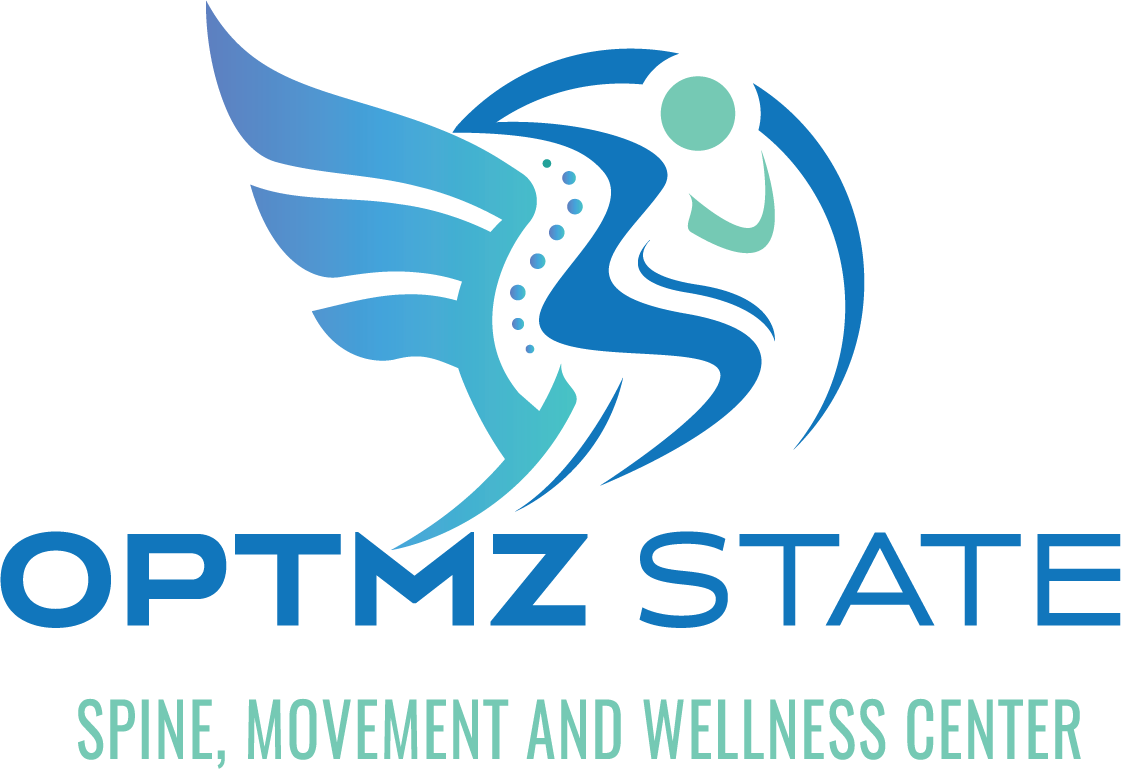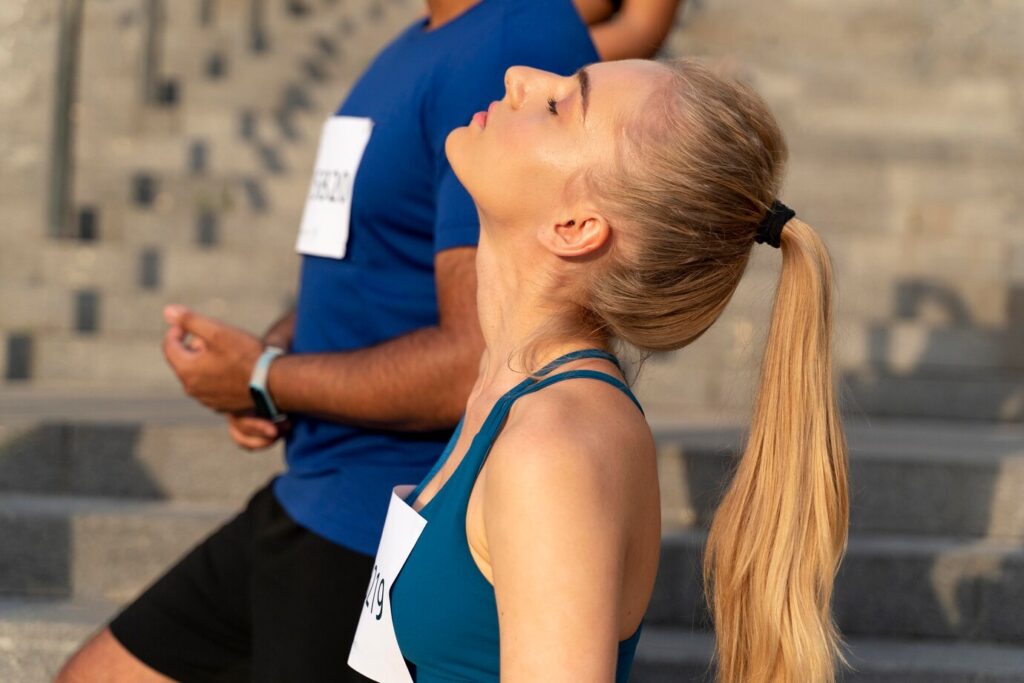You might feel overwhelmed by daily stressors, but incorporating natural relaxation techniques can make a significant difference. By focusing on deep breathing, mindfulness, and gentle physical activity, you can create a sanctuary of calm in your life. Each step offers a unique approach to restoring balance and clarity, leading you toward a more peaceful state of mind. Curious about how these practices can seamlessly fit into your routine? Let's explore the essential techniques that can transform your well-being.
Deep Breathing Exercises
Deep breathing exercises are a powerful way to calm your mind and reduce stress. By focusing on your breath, you can activate your body's relaxation response, helping you feel more centered and at ease.
To begin, find a comfortable position, either sitting or lying down. Close your eyes and take a moment to settle into the space around you.
Start by inhaling deeply through your nose for a count of four. Fill your lungs completely, allowing your abdomen to expand. Hold your breath for a count of four, feeling the fullness within. Then, exhale slowly through your mouth for a count of six or eight, letting go of any tension or negative thoughts.
Repeat this cycle for five to ten minutes, concentrating solely on your breath.
As you breathe, notice the sensations in your body. Are there areas of tightness? With each exhale, visualize releasing that tension, creating space for relaxation. If your mind wanders, gently guide your focus back to your breath without judgment.
This practice not only helps you relax but also cultivates awareness of your body and feelings.
Incorporate deep breathing exercises into your daily routine, especially during stressful moments. Whether you're at work or home, taking a few minutes to breathe can make a significant difference in your overall well-being.
Mindfulness Meditation
Mindfulness meditation invites you to fully engage with the present moment, fostering a sense of peace and clarity. This practice encourages you to observe your thoughts, feelings, and bodily sensations without judgment, helping you develop greater awareness and acceptance of your experiences.
To begin, find a quiet space where you can sit comfortably. You don't need any special equipment; just your breath and a willing mind.
Start by closing your eyes or softening your gaze. Take a few deep breaths, letting your body relax. As you settle in, focus your attention on your breath. Notice the sensation of the air entering and leaving your nostrils or the rise and fall of your chest.
When your mind wanders—and it will—gently bring your focus back to your breath. This act of returning is where the magic happens; it strengthens your ability to stay present.
You can practice mindfulness meditation for just a few minutes each day. As you grow more comfortable, you might increase the duration. Explore different techniques, like incorporating body scans or visualizations, to deepen your practice.
Remember, the goal isn't to eliminate thoughts but to cultivate a non-reactive awareness of them.
As you continue, you might notice reduced stress and increased emotional resilience. Allow yourself the grace to simply be in the moment, embracing whatever arises.
Mindfulness meditation can serve as a powerful tool for relaxation, empowering you to navigate life with greater ease and clarity.
Progressive Muscle Relaxation
Progressive Muscle Relaxation (PMR) is a powerful technique that helps you release tension and promotes overall relaxation.
By systematically tensing and then relaxing different muscle groups, you can experience significant benefits for both your body and mind.
Let's explore the key steps to practice PMR effectively and access its full potential.
Benefits of Muscle Relaxation
As you engage in muscle relaxation techniques, you'll discover a multitude of benefits that can enhance both your physical and mental well-being. One of the primary advantages is the reduction of muscle tension. By systematically tensing and relaxing your muscles, you'll release built-up stress and promote a sense of ease throughout your body. This practice can alleviate chronic pain and prevent injuries caused by tight muscles.
Additionally, muscle relaxation can considerably lower your stress levels. As you practice, you'll find that your mind becomes quieter, allowing you to think more clearly and focus better. This mental clarity can enhance your productivity and boost your overall mood.
You'll also notice improvements in your sleep quality. By incorporating muscle relaxation into your nightly routine, you prepare your body for rest, helping you fall asleep faster and enjoy deeper sleep.
Moreover, the practice can enhance your emotional resilience. By learning to control your body's response to stress, you'll feel more equipped to handle life's challenges.
Steps to Practice Effectively
Building on the benefits of muscle relaxation, practicing Progressive Muscle Relaxation (PMR) can be an effective way to achieve deeper relaxation.
Start by finding a quiet space where you won't be interrupted. Sit or lie down comfortably, allowing your body to relax. Close your eyes, take a few deep breaths, and focus on your breathing.
Next, begin with your feet. Tense the muscles in your feet for about five seconds, then release and notice how they feel. Move up to your calves, thighs, and so on, tensing and relaxing each muscle group in turn. As you go higher, pay attention to any tension in your body, allowing it to melt away with each release.
Don't rush this process; take your time with each muscle group. Once you reach your neck and shoulders, hold the tension for a moment and then let it go completely.
Finally, take a few more deep breaths, allowing your entire body to feel heavy and relaxed.
Practice PMR regularly, and you'll find it becomes easier to recognize tension in your body and release it, leading to a more relaxed state overall.
Gentle Yoga Practices
Gentle yoga practices offer a serene way to cultivate mindfulness and relaxation. By incorporating simple poses and breathing techniques, you can create a calming environment that helps reduce stress and enhances your overall well-being.
Whether you're a beginner or an experienced practitioner, these gentle movements allow you to connect with your body and mind, promoting tranquility.
To get started, consider these three gentle yoga practices:
- Child's Pose: This restful position helps stretch your back and hips while promoting relaxation. It's a perfect way to center yourself after a busy day.
- Cat-Cow Stretch: Alternating between these two poses helps relieve tension in your spine and encourages deep breathing. It's a great way to awaken your body gently.
- Seated Forward Bend: This pose calms the mind and stretches the spine and hamstrings. It's ideal for fostering a sense of peace as you breathe deeply.
As you practice, focus on your breath. Inhale deeply through your nose, allowing your abdomen to rise, and exhale slowly through your mouth. This rhythm helps ground you in the moment, allowing distractions to fade away.
Try to spend even just a few minutes each day on these gentle yoga practices. You'll not only feel more relaxed, but you'll also cultivate a greater sense of mindfulness, enhancing your daily life.
Nature Walks
Nature walks offer you a revitalizing way to relax and recharge. By immersing yourself in natural surroundings, you can experience numerous benefits for your mental and physical well-being.
To make the most of your walks, let's explore some effective tips and the advantages that come with taking a step outside.
Benefits of Nature Walks
Taking a stroll in the great outdoors can do wonders for your well-being. Nature walks offer a revitalizing escape from daily stress, allowing you to reconnect with the world around you.
When you step outside, you're not just exercising; you're also enjoying numerous benefits that enhance your mental and physical health.
Here are some key advantages of nature walks:
- Improved Mood: Spending time in nature can elevate your mood and reduce feelings of anxiety and depression.
- Enhanced Creativity: Being surrounded by natural beauty can stimulate your creative thinking and problem-solving abilities.
- Better Focus: A walk in the woods can help you clear your mind, leading to increased concentration and productivity.
Tips for Effective Walking
When you're ready to make the most of your outdoor experience, applying some effective walking tips can enhance your nature walks even further.
Start by choosing the right footwear; comfortable, supportive shoes can help prevent blisters and fatigue. Aim for loose-fitting clothing that allows for easy movement and helps regulate your body temperature.
Before you head out, set a pace that feels good for you. There's no need to rush; walking at a moderate speed lets you soak in your surroundings. Pay attention to your posture—keep your shoulders relaxed and head up, which not only helps with balance but also allows you to fully enjoy the scenery.
Consider bringing along a friend or family member to share the experience; social interaction can boost your mood.
Don't forget to hydrate! Carry a water bottle to stay refreshed, especially on warmer days.
Finally, take time to pause and breathe deeply. Listen to nature's sounds, observe wildlife, and appreciate the beauty around you.
With these tips, you'll not only enjoy your nature walks more, but you'll also leave feeling rejuvenated and relaxed.
Aromatherapy Techniques
Have you ever wondered how certain scents can instantly lift your mood or calm your nerves? That's the magic of aromatherapy! By using essential oils extracted from plants, you can create a soothing atmosphere that promotes relaxation and well-being.
Here are some techniques you can easily incorporate into your daily routine:
- Diffusion: Use an essential oil diffuser to disperse your favorite scents throughout your space. Lavender is great for relaxation, while citrus oils like lemon and orange can energize your mood.
- Inhalation: Simply inhaling the scent of an essential oil can have immediate effects. Place a few drops of your chosen oil on a cotton ball or tissue and take a deep breath. This technique is perfect for on-the-go stress relief.
- Topical Application: Mix essential oils with a carrier oil, like coconut or jojoba, and apply them to pulse points, such as your wrists or behind your ears. Just be sure to do a patch test first to avoid any skin irritation.
To maximize the benefits, consider combining these techniques. For instance, you can diffuse calming scents while practicing deep breathing exercises or meditating.
Guided Visualization
Guided visualization is a powerful technique that harnesses the imagination to promote relaxation and reduce stress. By creating mental images, you can transport yourself to calming environments that soothe your mind and body. This practice can be done anywhere, making it a convenient option for your daily relaxation routine.
To start, find a quiet space where you won't be disturbed. Sit or lie down comfortably, and close your eyes. Take a few deep breaths, inhaling through your nose and exhaling through your mouth. As you settle into a relaxed state, begin to visualize a peaceful scene. It could be a serene beach, a tranquil forest, or a cozy room—whatever resonates with you.
Now, immerse yourself in the details. Picture the colors, sounds, and scents of your environment. Feel the warmth of the sun or the coolness of the breeze on your skin. Engage all your senses to make the experience as vivid as possible. If your mind starts to wander, gently guide it back to your visualization.
As you continue this practice, allow your body to relax further. Notice any tension melting away as you breathe deeply and focus on the imagery. Spend around 10 to 15 minutes in this state, letting your mind and body reconnect.
When you're ready to conclude, slowly bring your awareness back to the present. Open your eyes and take a moment to notice how you feel. With practice, guided visualization can become a valuable tool in your relaxation toolkit.
Journaling for Clarity
Journaling can be a powerful tool for gaining clarity in your thoughts and emotions.
By exploring different techniques for effective writing, you can reveal new insights and ideas.
If you ever hit a wall with writer's block, don't worry—there are easy strategies to help you get back on track.
Benefits of Journaling
Through the simple act of putting pen to paper, you can access a deeper understanding of your thoughts and emotions. Journaling offers you a unique opportunity to reflect on your experiences and gain clarity in your life.
By regularly expressing your feelings, you'll find that it helps reduce stress and anxiety while fostering a sense of peace.
Here are some benefits of journaling that you might find compelling:
- Enhanced Self-Awareness: Writing down your thoughts allows you to identify patterns, triggers, and areas for growth in your life.
- Improved Emotional Regulation: Putting your feelings into words can help you process emotions more effectively, preventing them from becoming overwhelming.
- Goal Setting and Tracking: Journaling gives you a space to set personal and professional goals, helping you stay focused and accountable.
Techniques for Effective Writing
When you sit down to write, focusing on clarity can make all the difference in how effectively you express your thoughts. Start by organizing your ideas before you put pen to paper. Create an outline to structure your writing, guiding your flow and ensuring you don't stray off-topic.
Next, use simple language. Avoid jargon and complex sentences that can confuse your reader. Instead, aim for straightforward expressions that convey your message clearly. Short paragraphs are also helpful; they make your writing easier to digest and keep your audience engaged.
As you write, don't hesitate to revise. Editing is where clarity truly shines. Reread your work, eliminating unnecessary words and clarifying vague ideas. Ask yourself if each sentence contributes to your main point. If not, consider cutting it.
Finally, incorporate journaling as a daily practice. It's an excellent way to refine your thoughts and strengthen your writing skills. Set aside time to jot down your feelings or observations; this will enhance your ability to articulate ideas clearly.
With these techniques, you'll find that your writing becomes not just effective, but also a powerful tool for self-expression.
Overcoming Writer's Block
Writer's block can feel like an insurmountable barrier, but journaling can help you break through. By putting your thoughts on paper, you clear your mind and release your creativity.
Start by setting aside a few minutes each day to jot down whatever comes to mind. It doesn't have to be perfect; just let the words flow.
Here are three journaling techniques to help you gain clarity:
- Free Writing: Set a timer for 10 minutes and write non-stop about anything. Don't worry about grammar or structure; just let your thoughts pour out.
- Prompts: Use writing prompts to kickstart your creativity. Questions like "What's been on my mind lately?" can guide your writing and spark new ideas.
- Gratitude Lists: Write down three things you're grateful for. This shifts your mindset and can help reduce anxiety, making it easier to write.
Herbal Teas for Calmness
Many people find that sipping herbal teas can be a simple yet effective way to promote calmness and relaxation. The warm beverage not only soothes your body but also offers a moment of mindfulness in your busy day. There's a variety of herbal teas to choose from, each with unique properties that can help you unwind.
Chamomile tea is a popular choice for its gentle sedative effects. It can help ease anxiety and improve sleep quality.
If you're looking for something with a bit more flavor, try lavender tea. The aroma alone can transport you to a tranquil place, while its calming effects help reduce stress levels.
Peppermint tea is another great option. Its invigorating taste can awaken your senses while also promoting relaxation. The menthol in peppermint has a soothing effect on the mind, making it perfect for winding down after a hectic day.
For an earthy flavor, consider valerian root tea. Known for its sleep-inducing properties, it's an ideal choice for those struggling with insomnia or restless nights. Just remember to start with a small amount, as its potency can vary.
Don't forget about lemon balm tea, either. This herb is known for its ability to lift your spirits while simultaneously calming your nerves.
To create a soothing ritual, brew a cup of your favorite herbal tea, take a moment to inhale its aroma, and enjoy each sip. You'll find that this simple act can greatly enhance your sense of calm and relaxation.
Digital Detox Time
Taking a break from screens can be a revitalizing way to reconnect with yourself and the world around you. In today's fast-paced digital age, it's easy to get lost in endless notifications and scrolling feeds. A digital detox allows you to step back, reflect, and recharge your mental energy.
You don't have to commit to a long hiatus; even short breaks can make a difference.
Here are some simple ways to implement digital detox time into your life:
- Set Boundaries: Designate tech-free hours during your day. Try to unplug for at least an hour before bedtime to promote better sleep.
- Engage in Nature: Spend time outdoors. Whether it's a walk in the park or a hike in the woods, nature can help ground you and reduce stress.
- Explore Hobbies: Revisit activities you enjoy that don't involve screens. Read a book, try out a new recipe, or get creative with arts and crafts.
Conclusion
By incorporating these natural relaxation techniques into your routine, you can effectively reduce stress and enhance your overall well-being. Start with deep breathing and mindfulness, then explore gentle yoga and nature walks. Don't forget to enjoy calming herbal teas and take time for journaling and digital detoxes. Remember, it's all about finding what works best for you. Prioritize your relaxation and make these practices a regular part of your life for lasting tranquility and joy.



